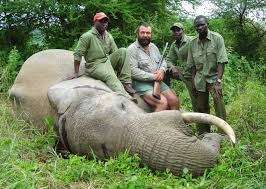Mini Sheet: Dogs (Cinderellas 2001)
Dogs (Cinderellas 2001)
21 April (Cinderellas ) within release Tajikistan goes into circulation Mini Sheet Dogs face value 120 Tajikistani somoni
| Mini Sheet Dogs in catalogues | |
|---|---|
| Colnect codes: | Col: TJ 2001-03 |
Mini Sheet is square format.
This item was illegally produced without the authorization of the postal administration inscribed on the stamps. They have no postal validity.Also in the issue Tajikistan:
- Stamp - Dinosaur face value 1;
- Stamp - Coelophysis face value 3;
- Stamp - Cernotaurus face value 2;
- Mini Sheet - Dinosaurs face value 21;
- Stamp - Plateosaurus face value 4;
- Stamp - Herrerasaurus face value 6;
- Stamp - Eoraptor face value 5;
- Mini Sheet - Dogs face value 120;
|
Data entry completed
53%
|
|
|---|---|
| Mini Sheet Dogs in digits | |
| Country: | Cinderellas |
| Date: | 2001-04-21 |
| Print: | Offset lithography |
| Emission: | Cinderella |
| Format: | Mini Sheet |
| Face Value: | 120 Tajikistani somoni |
Mini Sheet Dogs it reflects the thematic directions:
The domestic dog (Canis lupus familiaris or Canis familiaris) is a member of genus Canis (canines) that forms part of the wolf-like canids, and is the most widely abundant carnivore. The dog and the extant gray wolf are sister taxa, with modern wolves not closely related to the wolves that were first domesticated. The dog was the first domesticated species and has been selectively bred over millennia for various behaviors, sensory capabilities, and physical attributes. Their long association with humans has led dogs to be uniquely attuned to human behavior and they are able to thrive on a starch-rich diet that would be inadequate for other canid species. Dogs vary widely in shape, size and colours. Dogs perform many roles for people, such as hunting, herding, pulling loads, protection, assisting police and military, companionship and, more recently, aiding handicapped individuals. This influence on human society has given them the sobriquet "man's best friend".
The horse (Equus ferus caballus) is one of two extant subspecies of Equus ferus. It is an odd-toed ungulate mammal belonging to the taxonomic family Equidae. The horse has evolved over the past 45 to 55 million years from a small multi-toed creature, Eohippus, into the large, single-toed animal of today. Humans began to domesticate horses around 4000 BC, and their domestication is believed to have been widespread by 3000 BC. Horses in the subspecies caballus are domesticated, although some domesticated populations live in the wild as feral horses. These feral populations are not true wild horses, as this term is used to describe horses that have never been domesticated, such as the endangered Przewalski's horse, a separate subspecies, and the only remaining true wild horse. There is an extensive, specialized vocabulary used to describe equine-related concepts, covering everything from anatomy to life stages, size, colors, markings, breeds, locomotion, and behavior.
Hunting is the human practice of seeking, pursuing, capturing, or killing wildlife or feral animals. The most common reasons for humans to hunt are to exploit the animal's body for meat and useful animal products (fur/hide, bone/tusks, horn/antler, etc.), for recreation/taxidermy (see trophy hunting), although it may also be done for non-exploitative reasons such as removing predators dangerous to humans or domestic animals (e.g. wolf hunting), to eliminate pests and nuisance animals that damage crops/livestock/poultry or spread diseases (see varminting), for trade/tourism (see safari), or for ecological conservation against overpopulation and invasive species.



